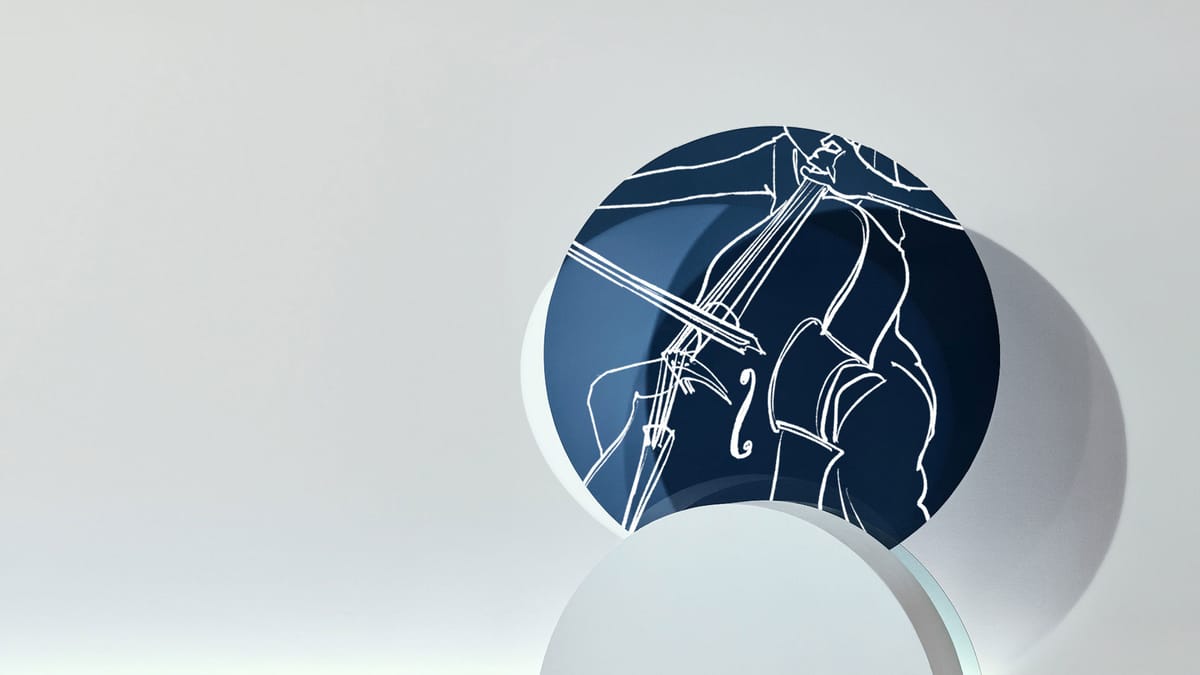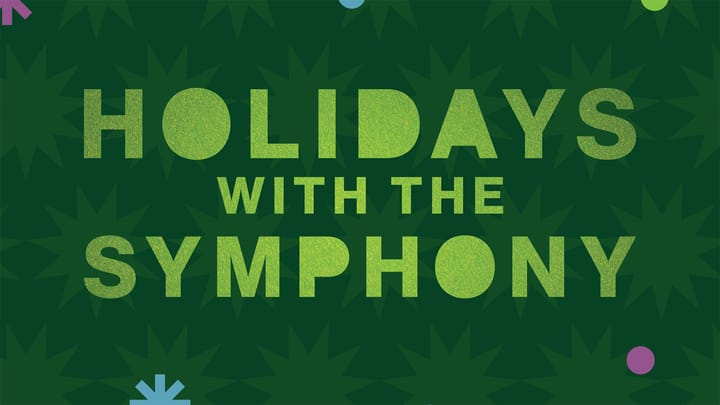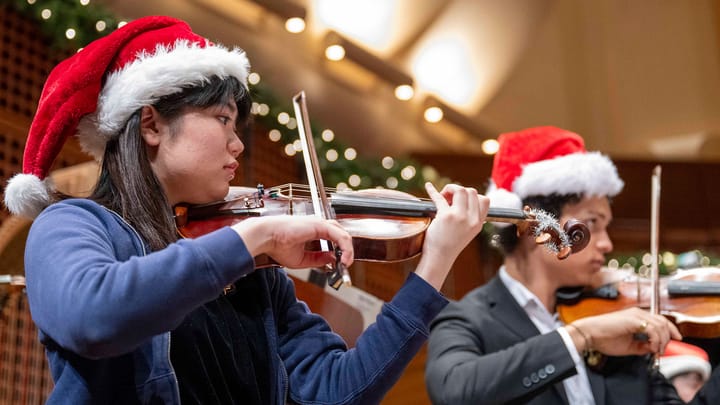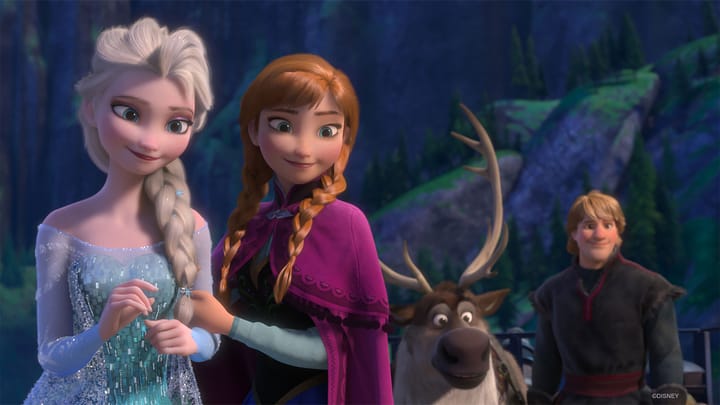In This Program
The Concert
Sunday, June 15, 2025, at 2:00pm
Musicians of the San Francisco Symphony
Caroline Shaw
Entr’acte (2011)
Wyatt Underhill violin
Yuna Lee violin
Leonid Plashinov-Johnson viola
Sébastien Gingras cello
Anton Arensky
String Quartet No. 2 in A minor, Opus 35 (1894)
Moderato
Theme: Moderato (and Variations)
Finale: Allegro sostenuto–Allegro moderato
Jessie Fellows violin
Katie Kadarauch viola
Sébastien Gingras cello
Anne Richardson cello
Intermission
Aleksay Igudesman
Latin Suite (2020)
La Cucaracha
Salsa de la luna
Tango sin nombre
Rumba Loco
Katie Kadarauch viola
Katarzyna Bryla viola
Johannes Brahms
String Quartet No. 3 in B-flat major, Opus 67 (1875)
Vivace
Andante
Agitato (Allegretto non troppo)
Poco Allegretto con Variasioni
Jessie Fellows violin
Olivia Chen violin
Jonathan Vinocour viola
Anne Richardson cello
Program Notes
Entr’acte
Caroline Shaw
Born: August 1, 1982, in Greenville, North Carolina
Work Composed: 2011
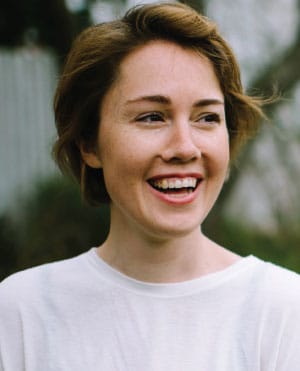
Caroline Shaw was a child violinist—she began studying with her violinist-mother at the age of two—who grew up to be a composer as well as an expert string-player and singer. As a youngster she was drawn to write original pieces reflecting classic compositions she encountered. She majored in violin at Rice University and, after a year in Europe studying garden design through a Watson Fellowship, continued to a master’s degree in performance at Yale. All the while she reveled in choral singing, but not until she entered a doctoral program at Princeton did she begin extensive formal training in composition.
Vocal music would bring her “big break” when, in 2013, she became the youngest recipient ever of the Pulitzer Prize for Music, for her Partita for 8 Voices, written for Roomful of Teeth, a vocal ensemble to which she belonged (and still does). The Pulitzer jury described that work, based on Baroque dance forms, as “a highly polished and inventive a cappella work uniquely embracing speech, whispers, sighs, murmurs, wordless melodies and novel vocal effects.” Justin Peck would choreograph the piece for New York City Ballet. Since winning the Pulitzer, she has received commissions from many leading musicians and organizations, including the Seattle Symphony, Los Angeles Philharmonic, Baltimore Symphony, and Philharmonia Baroque; produced collaborations with Kanye West and Nas; contributed to records by the National; and provided music for (and appeared in) the TV series Mozart in the Jungle. Among her recent projects was the score for Ken Burns’s film Leonardo. Entr’acte, she states:
was written in 2011 after hearing the Brentano Quartet play Haydn’s [string quartet] Op. 77, No. 2 — with their spare and soulful shift to the D-flat major trio in the minuet. It is structured like a minuet and trio, riffing on that classical form but taking it a little further. I love the way some music (like the minuets of Op. 77) suddenly takes you to the other side of Alice’s looking glass, in a kind of absurd, subtle, technicolor transition.
String Quartet No. 2 in A minor, Opus 35
Anton Arensky
Born: July 12, 1861, in Novgorad, Russia
Died: February 25, 1906, in Terioki, Finland
(now Zelenogorsk, Russia)
Work Composed: 1894
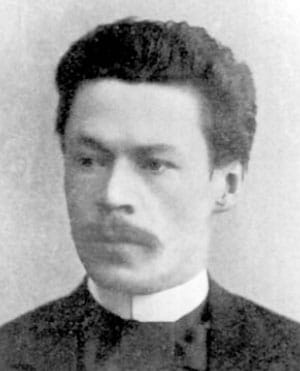
Anton Arensky might have carried on the nationalistic tendencies of his teacher, Nicolai Rimsky-Korsakov, with whom he studied in Saint Petersburg, but instead he drifted toward Tchaikovsky’s less nationalistic camp. Rimsky-Korsakov said of him, “In his youth Arensky had not escaped entirely my own influence; later he fell under that of Tchaikovsky. He will soon be forgotten.” Others disagreed. Stravinsky later condemned Rimsky-Korsakov’s indictment, which continued to taint Arensky’s reputation for decades.
In 1894, Arensky composed two chamber works as memorial pieces: his Piano Trio No. 1 to commemorate the cellist Karl Davïdov, who had died in 1889, and his String Quartet No. 2, in memory of Tchaikovsky, who had died in 1893. Ever since Haydn more-or-less invented the genre of the string quartet in the mid-18th century, the ensemble had comprised two violins, a viola, and a cello. In this work, Arensky made the unorthodox decision to write instead for one violin, one viola, and two cellos. This sinks the center of gravity deeper, supporting the work’s intention as a memorial.
The quartet opens with a lugubrious religious chant, harmonized modally and played in homophonic style by the four muted instruments in the manner of a Russian liturgical choir. Following the passionate main section of the movement, this hymn returns at the end, and it will resurface with slightly altered harmony to close the second movement as well, lending cohesion to the composition. The brief third movement also opens with a chant, in this case one associated with funerals, and it gives way to a brilliant outpouring that includes fugal elaboration around a Russian patriotic song. The opening bars of the compositions Arensky used as sources were printed as a preface to the score when it was published, within months of its premiere.
The second movement, however, is truly the core of the piece: a set of eight variations (plus coda) on Tchaikovsky’s song “Legenda” (or “The Christ Child Had a Garden,” sometimes translated as “When Jesus Christ was but a Child”), one of a set of 16 children’s songs Tchaikovsky had published a decade earlier.
Latin Suite
Aleksay Igudesman
Born: July 22, 1973, in Leningrad (Saint Petersburg)
Work Composed: 2020
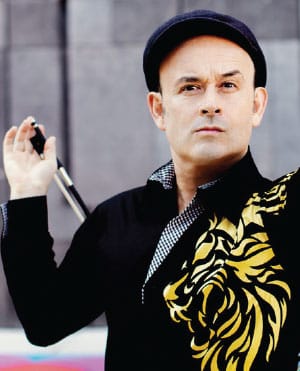
Aleksay Igudesman is most widely known as the violinist half of Igudesman & Joo, a duo-ensemble he formed with pianist Hyung-ki Joo that tours with programs of musical humor. “Humor,” he told journalist Maxim Reider in an interview for the Jerusalem Post, “is just another tool to make the palette more rich and interesting for myself and eventually for the public. It’s a great way to break out of convention. Combining music, theater, and comedy is a new and broader form of expression. In certain combinations you can make people laugh one moment, cry the next, and then be astounded by the beauty of the music.”
He was born in the Soviet Union into a family that scored a spot in the annual Jewish emigration quota for 1979 (“Being Jewish wasn’t hard in the Soviet Union—it was impossible,” he told Simon Yaffe of the Jewish Telegraph), and thereby he landed at age six in Bremerhaven, Germany. Music permeated his family. Both of his parents graduated from the Leningrad Conservatory—his mother as a pianist, his father as a violinist. His father was a concertmaster of the Leningrad Opera Theatre, and Aleksay’s older brother, Leonid (also a violinist), has been a member of the San Francisco Opera Orchestra since 1980. At the age of 12 he attended the Yehudi Menuhin School in England—it is there that he met Joo—after which he completed studies at the Vienna Conservatory.
He has composed many works for his duo, both on their own and for appearances with such orchestras as the Chicago Symphony, Los Angeles Philharmonic, Pittsburgh Symphony, Seattle Symphony, and New York Philharmonic, as well as leading orchestras in Vienna, London, Copenhagen, Zurich, Oslo, and Rome. He has also been active composing, arranging, and recording film music, often in collaboration with composer Hans Zimmer; his film credits include The Road to El Dorado, Spanglish, Jealous of the Birds, and Sherlock Holmes, which was nominated in 2010 for an Oscar for Best Original Score. He directed and appeared in Noseland, a 2012 mockumentary involving well-known concert musicians and actors, and this past fall he unveiled The Music Critic, a staged show in which actor John Malkovich joins Igudesman & Joo, plus other colleagues, to skewer historical music critics whose opinions proved off-target.
He has provided this description of his Latin Suite:
The first movement, “La Cucaracha,” is the most known Mexican song reimagined with my own twist. The second movement is a slow Salsa, and the third movement a modern Tango with rather curious irregular time signature changes. The fourth and last movement is a crazy Rumba, or at least that is what the title claims!
String Quartet No. 3 in B-flat major, Opus 67
Johannes Brahms
Born: May 7, 1833, in Hamburg
Died: April 3, 1897, in Vienna
Work Composed: 1875
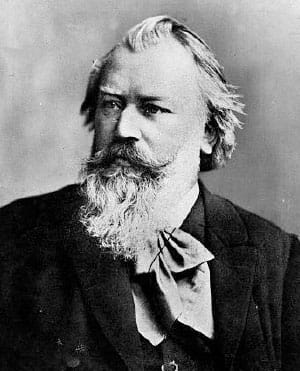
Johannes Brahms’s three string quartets were born in rather quick succession: the first two were written in 1873, and the third followed in 1875, after which he abandoned the medium forever. In the summer of 1875, Brahms vacationed in Ziegelhausen, a pleasant outpost on the Neckar River a few miles upstream from picturesque Heidelberg. When his friend Franz Wüllner invited him to travel to Munich, he demurred: “Your letter was a temptation to leave my pretty house . . . but all the same I stay sitting here, and from time to time write highly useless pieces in order not to have to look into the stern face of a symphony.”
Among the “highly useless pieces” that occupied him was his String Quartet No. 3. Where the first two impress with their technical brilliance and monumentality, they both come off as demanding and unremitting. The third, by contrast, stands as an example of Brahmsian cheerfulness. Some years later he told his violinist-friend Joseph Joachim that this was his favorite of his string quartets.
Folkish melodies abound, particularly in the first and last movements. In the opening Vivace, the opening theme seems a hunting tune, and the Bohemian cast of the second theme, which teeter-totters between different meters, suggests Dvořák. The Andante is born of a different mold. It begins as a tender “song without words,” but brusque chords interrupt, giving rise to a contrasting section with some neo-Baroque harmonic turns.
In the Agitato, Brahms employs a novel sonic effect for the first 28 measures: the two violins and cellos install mutes but the viola is heard unmuted, in full voice. The muted instruments are often asked to play out loudly—counterintuitive, but it is a question of Brahms finding a way to achieve a particular sonority for the movement’s nervously rustling ideas. The finale is a set of variations on a folkish theme. Such an odd rhythmic structure its opening displays: an unremarkable four-measure phrase, then repeated, followed by a six-measure phrase (also repeated) that sounds curtailed, or at least telescoped, as it veers through a sudden modulation into the minor mode; then an eight-measure bit and another six bars, again repeated. And so this movement continues, curiously lopsided in its bearing. After the six variations, Brahms continues to what we expect to be a seventh; but now the theme is the “horn call” that had launched the opening Vivace movement. In the ensuing variation he revisits another theme from the first movement, and then in the movement’s conclusion he interweaves these themes with the finale’s melody in a prolongation of that tune, an inspired and technically remarkable achievement that knits the whole piece into an unassailable whole.
—James M. Keller
Read a reminiscence from James M. Keller.
About the Artists
Wyatt Underhill joined the San Francisco Symphony as Assistant Concertmaster in 2018 and is currently Acting Associate Concert-master, holding the San Francisco Symphony Foundation Chair. He was previously assistant concertmaster of the Baltimore Symphony, substitute concertmaster with the New Haven Symphony, and associate concertmaster of Symphony in C. He was the founding first violinist of the Blue Hill String Quartet and was a top prizewinner in the Irving M. Klein International Competition for Strings.
Yuna Lee has been the second violinist of the Alexander String Quartet since 2023 and is currently a season substitute second violinist with the San Francisco Symphony. She previously played with the St. Louis Symphony, served as concertmaster of the New World Symphony, was a member of the Knights chamber orchestra, and a founding member of the Phaedrus String Quartet. She studied at the Juilliard School.
Leonid Plashinov-Johnson joined the San Francisco Symphony viola section in 2022. Previously a member of the St. Louis Symphony, he is a laureate of multiple competitions, most recently the Primrose International Viola Competition, and has participated in the Yellow Barn, Ravinia, and AIMS festivals. Born in Russia, he graduated from New England Conservatory, where he won the concerto competition.
Sébastien Gingras joined the San Francisco Symphony in 2010 and holds the Penelope Clark Second Century Chair. He was previously a member of the New World Symphony and the St. Louis Symphony. He grew up in Chicoutimi, Québec, where he was educated at the Conservatoire de Musique. After graduating, he moved to Boston to study at New England Conservatory, where he received his master’s degree in 2005. He has participated in the Ravinia Festival’s Steans Institute and Yellow Barn.
Jessie Fellows is Acting Associate Principal Second Violin with the San Francisco Symphony and holds the Audrey Avis Aasen-Hull Chair. Prior to her appointment, she performed frequently with the St. Louis Symphony and New York Philharmonic. Born into a musical family, she began her studies at the age of three under the direction of her mother in Tulsa, Oklahoma. She holds degrees from the McDuffie Center for Strings at Mercer University and the Juilliard School.
Katie Kadarauch joined the San Francisco Symphony in 2007 as Assistant Principal Viola. A native of the Bay Area, she was principal viola of the SF Symphony Youth Orchestra and earned a bachelor’s degree and graduate diploma from the New England Conservatory. She also studied at the Colburn School, during which time she performed with the Los Angeles Philharmonic and recorded film scores. She plays on a Peter Rombouts viola ca. 1720, on loan from the SF Symphony.
Anne Richardson joined the San Francisco Symphony as Associate Principal Cello at the beginning of this season, and holds the Peter & Jacqueline Hoefer Chair. She was most recently an academy fellow with the Bavarian Radio Symphony and has performed with the Verbier Festival Orchestra, Orchestre de la Suisse Romande, and Pittsburgh Symphony. As a soloist, she has appeared with the Louisville Orchestra, Massapequa Philharmonic, Bryan Symphony Orchestra, and Juilliard Orchestra. A native of Louisville, Kentucky, she studied at the Juilliard School and the University of Michigan.
Katarzyna Bryla joined the San Francisco Symphony viola section beginning with the 2022–23 season. She was born into a family of musicians and has earned more than two dozen awards in the United States, France, and her native Poland. In 2019 she became a coprincipal violist of Orchestra of St. Luke’s and has also been a member of the New York City Ballet Orchestra and the New York Pops.
Olivia Chen joined the San Francisco Symphony’s second violin section at the beginning of the 2023–24 season and is currently Acting Assistant Principal. She was a Tanglewood fellow for two summers, serving as concertmaster of the Tanglewood Music Center Orchestra. She has also performed with the New York String Orchestra at Carnegie Hall and with the Baltimore Symphony. Chen pursued her undergraduate studies at the Peabody Institute of the Johns Hopkins University, where she won the Marbury Violin Competition, the Melissa Tiller Violin Prize, and the Sidney Friedberg Prize.
Jonathan Vinocour joined the San Francisco Symphony as Principal Viola in 2009 and was previously principal viola of the St. Louis Symphony and guest principal of the Leipzig Gewandhaus Orchestra and Chicago Symphony. He has frequently soloed with the SF Symphony and has also played concertos with the St. Louis Symphony, La Jolla Music Society, Mainly Mozart Festival Orchestra, and New World Symphony. He serves on the faculty of the San Francisco Conservatory of Music as well as the Aspen Music Festival and School. He plays on a 1784 Lorenzo Storioni viola on loan from the SF Symphony.

